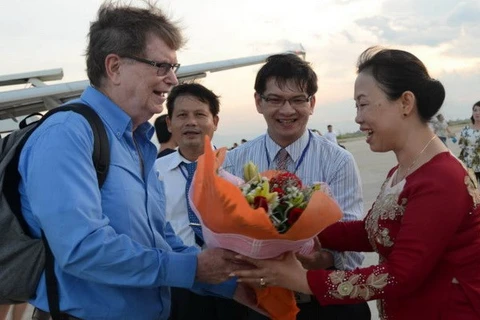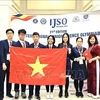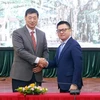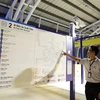 George Smoot is surprised and fascinated by the questions on cosmology posed by Vietnamese student (Source: VNA)
George Smoot is surprised and fascinated by the questions on cosmology posed by Vietnamese student (Source: VNA) US Physics Nobel laureate George Smoot had an exchange on August 18 with outstanding students in the central province of Binh Dinh who won awards at the recent International Physics Olympiad and those with excellent scholastic achievements.
George Smoot praised local students for their in-depth knowledge of science and their commitment to physics, saying he was surprised and fascinated by the questions on cosmology posed by the students.
He shared his knowledge and experiences with participants, noting that scientific research aims to contribute to social development. The scientist advised the Vietnamese students to pursue their passion and dreams in the field.
Local students said they were honoured to meet the world famous scientist and pledged to remain dedicated to their studies.
Professor Tran Thanh Van, Chairman of the Meeting Vietnam Association – the exchange’s organiser, underlined the significance of the dialogue, affirming that his agency will organise similar discourses in the time ahead.
George Smoot, who won the Nobel Prize in Physics in 2006, is attending an international physics conference in Binh Dinh province from August 17-22, which focuses on the evolution of the universe, the Big Bang theory and universal radiation.
The conference serves as a bridge to bring scientists together to exchange views and present their studies in the field.-VNA




















